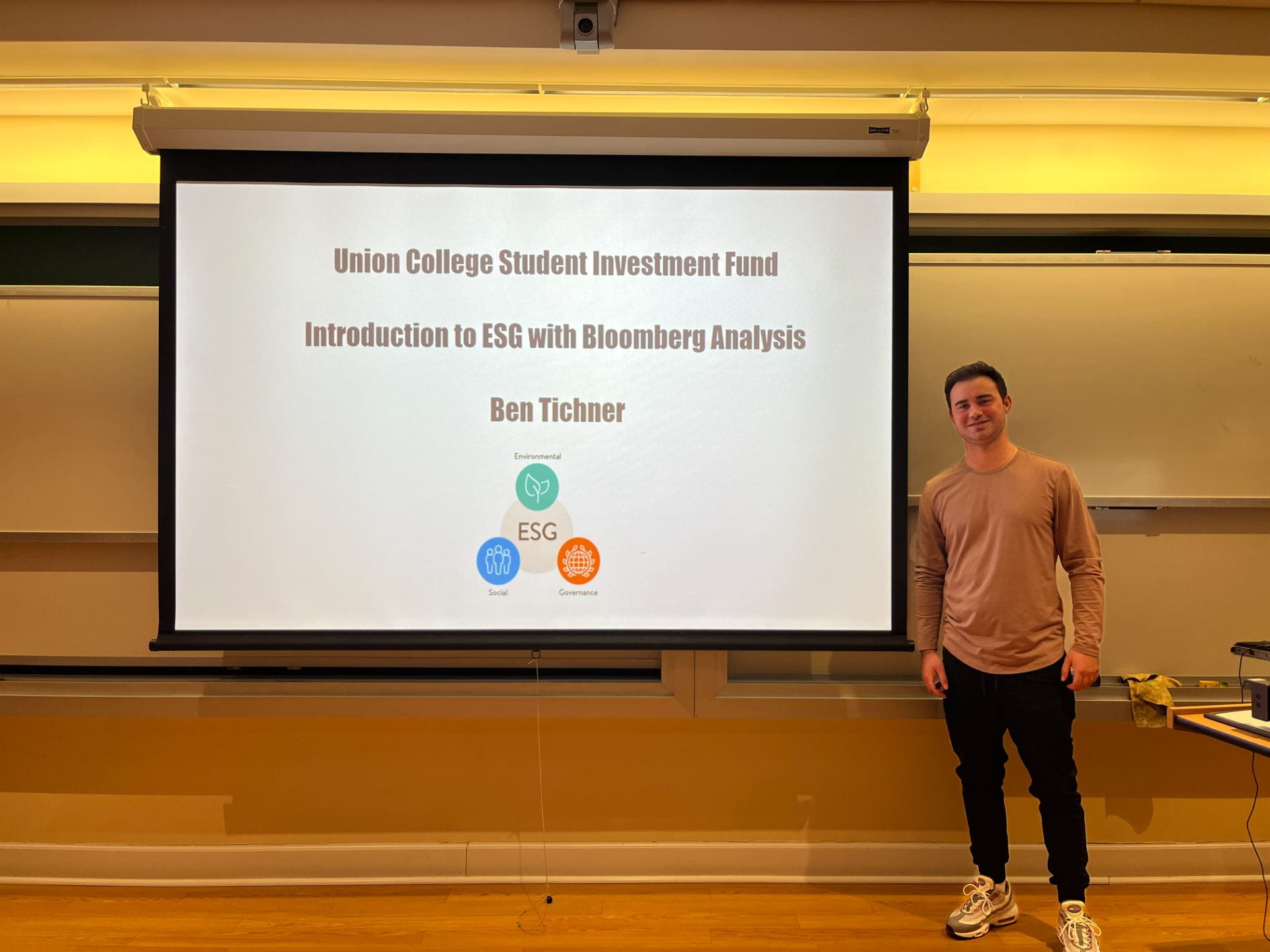On Wednesday, 2/7, ESG sector director Ben Tichner presented on the emerging trend of ESG in financial markets. The focus of this presentation was a historical look at sustainable finance, the contemporary ESG movement, and a demonstration of the various ways to access and synthesize ESG data in the Bloomberg Terminal – with a specific focus on our current portfolio. The motivation for this presentation was to introduce Fund members to a niche but increasingly mainstream realm of finance, and to springboard internal discussions of how much we want to consider ESG metrics in investment decisions.
What is ESG: Short for Environmental, Social, and Corporate Governance, ESG is a broad term for criteria used to screen investments for social responsibility. Environmental – refers to companies environmental stewardship, Social – refers to a company’s support for its employees and how well it treats stakeholders, Corporate Governance – refers to effectiveness and independence of the board structure, executive compensations, and accounting management . In recent years, institutional investors and pension funds have grown too large to diversify away from systemic risk, forcing them to consider the environmental and social impact of their portfolios. There’s a general trend of ESG prioritization, moving from niche, to mainstream, to mandatory for many firms.
The history of responsible investing and sustainable finance: Before “ESG” became a popular modern acronym (coined in 2005 in a joint initiative between the United Nations, International Finance Corporation, and Swiss Government), there was an increasing demand for increased corporate transparency and accountability. Certain examples of socially responsible investing that were highlighted include:
- In the 1960s, Vietnam War protesters demanded that university endowment funds no longer invest in defense contractors due to social injustices
- Decades later, South African apartheid became protested in a similar way. Eventually 155 schools divested from companies doing business in South Africa. This expanded beyond campuses, over 200 US businesses cut ties with South Africa between 1985 and 1990, resulting in a loss of 1 billion in direct American investment
- The 2015 Volkswagen Emissions Scandal, AKA “Dieselgate”, which is credited by many as the catalyst for the modern ESG movement. After it was found that Volkswagen had been secretly violating ambient air standards established by the Clean Air Act, they were sued by the EPA. This lost the company billions of dollars in fines and damages, and their stock plummeted soon after, culminating in the largest and most expensive scandal in the history of the automotive industry
After learning about these events, and taking a look at the recent growth in ESG investment, the discussion moved to a lesson on using the Bloomberg Terminal for data analysis. Similar to their “Market Concepts” self-paced e-learning course, Bloomberg recently launched an ESG course. Both are now available for Union students to obtain a certification in for free, using the Terminal located in the Schaffer Library. Some ESG-related Bloomberg Functions were explained, including:
- NI ESGCONTRV<GO> allows you to screen for news about controversial events, like the VW story
- FA ESG (Financial Analysis Dropdown) grants access to over 3800 ESG data fields across more than 13000 companies
- BESG<GO> find resources to identify industry-specific issues that drive financial impact
- TOP ESG Daily top ESG news
- NSUB ESG similar but with specific market focuses that can be changed
Next, the students were walked through an example of actually using Bloomberg Terminal functionality to compare two of our stocks with very different ESG ratings – Brookfield Infrastructure vs Dominion Energy. Finally, they were showed our entire portfolio’s ESG metrics, which are in generally good standing in terms of common stocks.
By Ben Tichner
